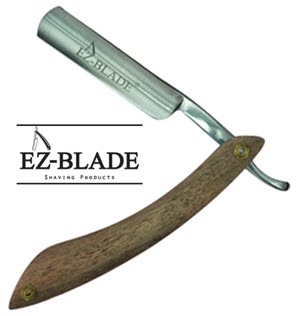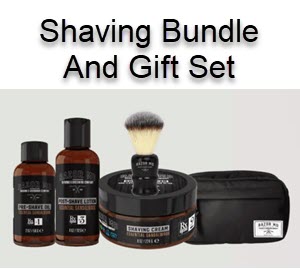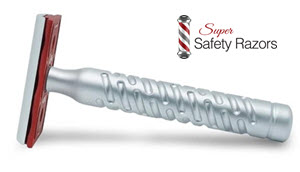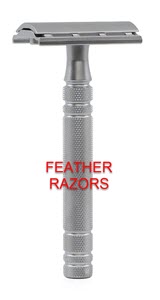Styptic Pencils: Quick Fix for Minor Bleeds & Nicks
Unveiling the Wonders of the Styptic Pencil: A Must-Have in Every Home

The styptic pencil emerges as a small yet mighty hero in personal care and first aid. Often underestimated, this compact tool is indispensable for anyone encountering a shaving nick or a minor cut. But what exactly is a styptic pencil, and why should it be in your bathroom cabinet or first aid kit? Let’s dive into this simple yet effective device’s multifaceted benefits and uses.
The Science Behind the Styptic Pencil
At its core, a styptic pencil is a hemostatic agent designed to stop minor bleeding swiftly. These pencils work by constricting blood vessels at the site of the wound. This action promotes clotting and serves an antiseptic function, reducing the risk of infection. The magic lies in its simplicity — a gentle application on the affected area causes the blood vessels to contract, sealing the wound almost instantaneously.
The Quintessential Shaving Companion
Shaving, while a routine part of grooming for many, frequently results in minor cuts or nicks. Although not severe, these minor injuries can be a source of irritation or embarrassment, especially when they refuse to stop bleeding. Enter the styptic pencil: a quick dab on the cut, and the bleeding halts within seconds. Its convenience and efficiency eclipse traditional remedies, making it an essential tool for anyone who shaves.
Beyond Shaving: A Versatile First Aid Tool
While the styptic pencil shines in the grooming world, its utility extends far beyond. It’s a versatile first-aid tool for treating minor cuts and scrapes encountered daily. Whether you’re in the kitchen, garden, or workshop, a styptic pencil can provide immediate relief and protection against infection for those unexpected injuries.
Portability and Practicality
One of the styptic pencil’s most appealing features is its portability. Small enough to fit in a toiletry bag, purse, or first aid kit, it’s an ideal companion for travel, outdoor activities, or any situation where space is at a premium. Unlike liquid antiseptics or bulky bandages, the styptic pencil is mess-free and requires no additional supplies for application.
An Economical Choice
In addition to its practical benefits, the styptic pencil is remarkably cost-effective. Its long shelf life and the small amount needed per use ensure that a single pencil can serve its purpose for an extended period, making it a wise investment for personal and family first aid needs.
With its simple yet powerful application, the styptic pencil is a testament to the notion that great things come in small packages. Whether you’re a grooming enthusiast seeking a quick fix for shaving nicks or a versatile, travel-friendly first aid solution, the styptic pencil deserves a spot in your arsenal. Its ability to stop bleeding quickly, combined with antiseptic properties and economic value, makes it an indispensable tool in managing minor cuts and injuries. Embrace the wonders of the styptic pencil, and elevate your care and first aid practices to new heights.
The Art of Prevention: Enhancing Personal Grooming Through Proactive Measures
The adage “prevention is better than cure” rings especially true in personal grooming. While minor cuts and nicks might seem trivial, they can lead to discomfort, skin irritation, or even infections if not properly managed. Fortunately, by adopting preventive measures in your grooming routine, you can significantly reduce the risk of these minor injuries and elevate your grooming experience. This article explores the benefits of preventative measures in personal grooming, focusing on shaving, one of the most common activities where cuts and nicks are prevalent.
The Foundation of Prevention: Skin Preparation
Proper skin preparation is the first and perhaps most crucial step in avoiding grooming injuries. Hydrating the skin and hair makes them softer and more accessible to cut, reducing the likelihood of razor drag and skin irritation. A warm shower or applying a warm, damp towel to the area before shaving can open pores and soften hair. This preparation facilitates a smoother shave and minimizes the risk of cuts.
The Role of Pre Shave Oils and Creams
Pre-shave oils and creams play a pivotal role in preventive grooming care. By forming a protective barrier over the skin, these products help the razor glide more smoothly, reducing friction and the chance of cuts. Pre shave oils can moisturize the skin, enhance razor glide, and prevent post shave irritation. For sensitive skin, selecting a pre-shave product with natural ingredients can offer soothing benefits without the risk of allergic reactions.
Selecting the Right Grooming Products
Understanding your skin type is essential when choosing grooming products. Dry skin may require more moisturizing products, while oily skin benefits from non-comedogenic (not pore-clogging) options. Hypoallergenic and fragrance-free products can minimize irritation for sensitive skin. Investing in a high-quality razor that suits your skin and hair type is also crucial. A dull blade can tug at the hair and increase the risk of cuts, so regular replacement of razor blades is recommended.
Technique Matters
Beyond products, the technique is critical in preventing grooming injuries. Using short, gentle strokes toward hair growth can minimize cuts and irritation. Avoiding excessive pressure and allowing the razor to do the work can further reduce the risk of nicks. Aftercare, including a soothing aftershave or moisturizer, can help calm the skin and promote healing.
The Broader Benefits
Adopting preventive measures in personal grooming goes beyond avoiding minor cuts and nicks. It contributes to overall skin health, reducing the risk of ingrown hairs, razor burns, and long-term skin damage. Moreover, a thoughtful grooming routine can transform a mundane task into a moment of self-care, enhancing your well-being and confidence.
Preventive measures in personal grooming are not just about avoiding injuries; they’re about embracing a holistic approach to self-care. By preparing the skin, selecting suitable products, honing your technique, and understanding the importance of aftercare, you can achieve a safer, more enjoyable grooming experience. Let prevention be your guiding principle, and elevate your grooming routine to an art form, ensuring that each stroke beautifies, protects, and nurtures your skin.
Embracing Nature’s Touch: The Benefits of Natural and DIY Skin Care Remedies
In the quest for healthy, vibrant skin, more individuals are turning towards the wisdom of nature and the simplicity of homemade solutions. The allure of natural and DIY skin care remedies lies not just in their accessibility but in their ability to harmonize with our body’s natural rhythms. This article explores the myriad benefits of incorporating organic and homemade treatments into your skincare routine, offering a complementary approach to conventional products like the styptic pencil for minor wounds and skin care.
The Allure of Natural Ingredients
Natural and DIY skin care remedies often utilize ingredients from the pantry or garden, such as honey, aloe vera, coconut oil, and tea tree oil. These ingredients are revered for their purity, potent healing, moisturizing, and antibacterial properties. For instance, honey is known for its wound healing and antimicrobial effects, making it an excellent natural remedy for minor cuts and abrasions. Aloe vera, with its soothing and anti-inflammatory properties, can calm irritated skin and accelerate healing.
Customization and Control
One of the most significant benefits of DIY skin care is the ability to tailor products to your specific skin needs and preferences. Whether addressing dryness, acne, sensitivity, or signs of aging, you can select ingredients that target those concerns without adding harsh chemicals or preservatives to some commercial products. This customization ensures that your skin receives what it needs without unnecessary additives.
Environmental and Economic Advantages
Natural and DIY skin care remedies benefit your skin and the environment. You can reduce your ecological footprint by using organic, sustainably sourced ingredients and reusable containers. Also, homemade skin care solutions are often more cost-effective than purchasing high-end commercial products, offering a budget-friendly alternative without compromising quality.
Complementing Conventional Care
While natural and DIY remedies offer numerous benefits, they can also complement conventional skin care products. For instance, homemade aloe vera gel can soothe and heal the skin more naturally after using a styptic pencil to stop bleeding from a minor shave cut. This holistic approach allows you to harness the best of both worlds — the immediate efficacy of conventional products and the gentle, nurturing touch of natural remedies.
Safety and Sensitivity
While natural ingredients are generally gentle on the skin, it’s important to remember that natural does not always mean safe for everyone. Conducting a patch test before trying a new ingredient can help ensure you don’t have an adverse reaction. Listening to your skin and respecting its limits is paramount in effectively integrating natural remedies into your care routine.
The benefits of natural and DIY skin care remedies can beautifully support the journey towards healthier skin and a more sustainable lifestyle. By embracing the gifts of nature and taking an active role in crafting your skincare solutions, you can enjoy a personalized, effective regimen in harmony with the environment. Whether used alone or in tandem with conventional products, natural and DIY remedies offer a path to radiant skin that is empowering and deeply nourishing.
The Cornerstone of Well-being: The Benefits of Personal Hygiene and Health
In the tapestry of health and well-being, personal hygiene practices stand out as fundamental threads intricately woven into the fabric of daily life. Maintaining good personal hygiene is not merely about societal acceptance but is crucial for physical and mental well-being. We will look into the profound benefits of personal hygiene and health, highlighting how these practices impact overall health, aid in the prevention of infections, influence skincare routines and are supported by the role of nutrition in skin health and wound healing.
A Shield Against Infections
Personal hygiene’s role in preventing infections is at the forefront of its benefits. Regular hand washing, dental care, and body hygiene effectively ward off harmful bacteria and viruses, reducing the risk of illnesses ranging from the common cold to more severe infections. These simple practices are the first line of defense in the battle against disease transmission, underscoring the importance of hygiene in maintaining public and personal health.
The Foundation of Skin Care
Personal hygiene extends beyond preventing illness; it is also the foundation of a healthy skincare routine. Cleansing the skin removes dirt, oil, and other impurities that can clog pores and lead to acne or other skin conditions. Moreover, proper hygiene practices, such as gentle washing and moisturizing, help maintain the skin’s natural barrier function, protecting against irritants and allergens. This attentiveness to skin hygiene can enhance the skin’s appearance, boost self-confidence, and contribute to overall well-being.
Nutrition: The Internal Hygiene
While external hygiene practices are vital, internal hygiene, mainly through nutrition, is crucial in skin health and wound healing. A balanced diet rich in vitamins, minerals, and antioxidants can fortify the skin from the inside out. Nutrients like vitamin C, zinc, and omega-3 fatty acids are known for their skin-healing properties and ability to support the immune system. Proper hydration is equally important; water consumption is essential for maintaining skin moisture and elasticity. Thus, nutrition can be seen as an internal hygiene practice that complements external care routines.
Psychological Well-being and Social Implications
The benefits of personal hygiene extend into the realms of psychological health and social interactions. Good hygiene practices can boost self-esteem and confidence, contributing to a positive self-image. Additionally, maintaining personal hygiene is respectful of others and can enhance social relationships by making interactions more comfortable and enjoyable for everyone involved.
A Lifelong Commitment
Embracing personal hygiene is a lifelong commitment to health and well-being. It requires regular attention and discipline but rewards individuals with numerous benefits, from reducing disease risk to enhancing personal appearance and confidence. Personal hygiene should be integrated into daily routines, supported by healthy lifestyle choices, including proper nutrition and regular physical activity.
Personal hygiene and health benefits impact individual well-being and the broader community. By adopting thorough hygiene practices, nourishing the body with a healthy diet, and caring for the skin, individuals can enjoy a higher quality of life, improved health outcomes, and a sense of well-being that radiates from within. Personal hygiene, therefore, is not just a matter of routine but a cornerstone of a healthy, fulfilling life.
Beyond the Basics: Exploring the Benefits of Alternative Hemostatic Agents
When it comes to managing minor cuts, scrapes, or even more significant wounds, the prompt cessation of bleeding is crucial to prevent infection and promote healing. While traditional methods like the styptic pencil have long been staples in first aid kits, a variety of alternative hemostatic agents offer additional benefits for wound care. This article delves into the world of these alternatives, including hemostatic gauzes, powders, and natural remedies, highlighting their unique advantages in stopping bleeding and aiding the healing process.
Hemostatic Gauzes: The Advanced Responder
Hemostatic gauzes represent a significant advancement in wound care technology. Infused with substances that accelerate the body’s natural clotting process, these gauzes are particularly beneficial for more extensive or severe wounds requiring immediate attention. They are designed to work quickly, significantly reducing blood loss and the risk of infection. Hemostatic gauzes are especially valuable in emergencies or for individuals on anticoagulant medications, offering a reliable solution when traditional bandages might fall short.
Hemostatic Powders: The Convenient Quick-Fix
Another innovative option in the realm of hemostatic agents is hemostatic powders. These powders can be directly applied to wounds, rapidly absorbing blood and forming a gel-like substance that aids in clot formation. Their ease of use and the convenience of carrying small packets or bottles make them an excellent addition to first aid kits for outdoor enthusiasts, athletes, and travelers. Hemostatic powders are beneficial for treating wounds in awkward or hard-to-reach places where gauzes and bandages might be less effective.
Natural Remedies: Harnessing Nature’s Healing Power
For those who prefer a more holistic approach to health care, various natural remedies have been known to possess hemostatic properties. Common herbs such as yarrow, witch hazel, and cayenne pepper can create poultices or infusions that help stop bleeding and initiate healing. Applying pressure with a cold pack can also constrict blood vessels and reduce blood flow, offering a simple yet effective method to manage minor bleeding. These natural solutions provide an alternative to synthetic products and connect individuals with traditional healing practices.
The Importance of Pressure and Elevation
Aside from hemostatic agents, basic first aid techniques such as applying pressure and elevating the injury above the heart level remain foundational in managing bleeding. These methods reduce blood flow to the wound area, allowing the body’s natural clotting mechanisms to take effect. When combined with hemostatic agents, pressure and elevation can significantly enhance the effectiveness of bleeding control.
The benefits of alternative hemostatic agents extend far beyond their immediate ability to stop bleeding. By offering options that cater to various situations, preferences, and wound types, these alternatives enrich the toolkit available for personal and emergency wound care. Whether opting for advanced products like hemostatic gauzes and powders or leaning towards natural remedies and traditional techniques, understanding and utilizing these alternatives can significantly improve outcomes in wound management. As with any health care decision, it’s essential to consider the specific needs of the individual and the nature of the wound, ensuring that the chosen method provides the best possible care and support for healing.
Nurturing Recovery: The Benefits of Skincare and Wound Healing
The Stages of Wound Healing
Wound healing is a complex process that unfolds in stages: hemostasis, inflammation, proliferation, and remodeling. Each phase plays a critical role in repairing the skin, from the initial clot formation to the final restoration of tissue strength. Recognizing these stages helps apply appropriate care techniques at each step, ensuring the wound heals properly and reducing the risk of complications.
Antiseptics: The First Line of Defense
Antiseptics are a crucial initial step in wound care to prevent infection by eliminating pathogenic microorganisms from the wound surface. Products containing ingredients like hydrogen peroxide, iodine, or alcohol can disinfect the area, though milder antiseptics may be preferable to avoid irritation. Using antiseptics correctly can significantly reduce the risk of infection, a common complication that can delay healing and increase the likelihood of scarring.
Moisture Balance: A Key to Effective Healing
Maintaining an optimal moisture balance in the wound environment promotes efficient healing. Excessive dryness can lead to scab formation, which may slow the healing process, while too much moisture can increase the risk of infection and maceration. Modern wound care emphasizes using semi-permeable dressings and specialized wound healing ointments that keep the wound moist but not overly wet, facilitating cell migration and tissue repair.
The Role of Moisturizers and Healing Ointments
Moisturizers and healing ointments play a significant role in the later stages of wound care, especially in preventing scarring. Products enriched with aloe vera, vitamin E, and essential oils can help keep the new skin hydrated and flexible, reducing the formation of tight, restrictive scars. These products can also soothe the skin, offer additional protection as the skin barrier rebuilds, and support the overall health of the surrounding skin.
Techniques to Promote Efficient Healing
Beyond products, specific techniques can aid in the healing process. Gentle cleaning of the wound, careful dressing changes, and avoiding picking at scabs or the wound area prevent secondary infections and further injury. Elevating the wounded area can reduce swelling and promote circulation, while a balanced diet rich in vitamins and minerals supports the body’s natural repair mechanisms.
The Impact of Comprehensive Skincare
Comprehensive skincare and wound healing practices extend beyond immediate recovery, impacting long-term skin health and appearance. By preventing infection and scarring, these practices ensure the skin can regain its strength and functionality while minimizing cosmetic concerns. This holistic approach to wound care facilitates physical recovery and supports psychological well-being by reducing anxiety about the healing process and its outcomes.
Conclusion
Understanding and implementing effective skincare and wound healing practices is essential for anyone seeking to navigate the recovery process successfully. Individuals can significantly enhance the healing process by combining antiseptics, maintaining proper moisture balance, applying healing ointments, and employing beneficial techniques. This attentive care ensures a smoother recovery and preserves the skin’s integrity and appearance, reflecting the profound connection between skin health and overall well-being.
- Bakblade 2.0: The Best Back Shaver for Men
- Ball Shaver That Won’t Cut You
- Shaving Gel: What to Know About!
- Henson Shaving: Where Design Meets Durability and Performance
- Caramel Honey Blonde Hair: Elevate Your Look
- Feather Razors: Precision Shaving for Every Skin Type
- Straight Razor Shaving: Unlocking a Closer, Smoother Shave
- Premium Safety Razors: Your Guide to Quality Shave
- Pros & Cons: Shaving Against the Grain Guide
- Maximize Your Shave: Norelco Sensotouch 3d Razor



